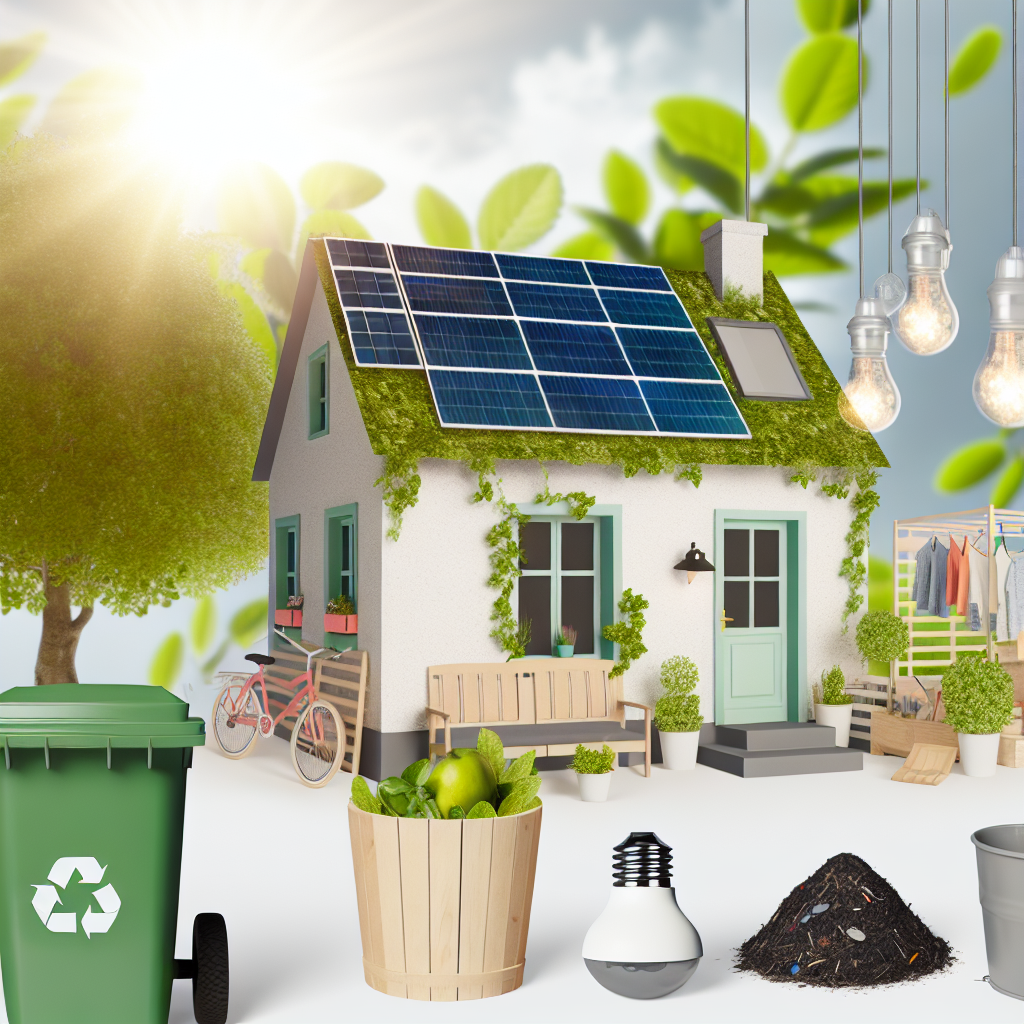10 Easy Changes for a Budget-Friendly, Earth-Friendly Home
Introduction
Welcome to Frugal Zeitgeist, where living green doesn’t mean spending a lot of money! Our planet needs a break from all the stuff we buy and throw away. More people are trying to live in a way that helps the Earth. And guess what? We can save money while helping the planet, like finding an old dollar bill in a jacket pocket. The trick is to make simple, cheap changes that can have a big effect. So, grab a reusable bottle and get ready for some easy swaps that will turn your home into an eco-friendly haven without emptying your wallet.
Section 1: Kitchen Changes
1. Reusable Produce Bags
Say goodbye to those flimsy plastic bags that rip before you get home. Reusable produce bags are strong, cute, and better for the Earth. They come in natural materials like cotton or mesh, which are great for soft fruits like tomatoes. You can find them at eco-stores or make your own with fabric scraps. Who knew helping the Earth could be this stylish?
2. Cloth Napkins
Do you remember the last time you used a paper napkin? We don’t, because we’re all about cloth napkins! Switching to cloth napkins isn’t just fancy, it’s a double win for the Earth and your wallet. A good set of cloth napkins can last hundreds of uses. Choose tough fabrics like linen or cotton and just toss them in the wash to clean.
3. Buy Food in Bulk
Channel your inner pioneer by buying in bulk. Bulk items are usually cheaper per unit and use less packaging. No more cupboard full of plastic bags. Use Mason jars or airtight containers to keep grains and spices fresh.
Section 2: Living Room and Cleaning Changes
4. LED Light Bulbs
Light up like an LED! These bulbs use up to 80% less energy than regular bulbs, which is very cool. They may cost more at first, but they last longer, saving money over time. Plus, you won’t have to change them as often. Just make sure to check what kind of bulb each lamp needs before you buy.
5. Natural Cleaning Products
Cleaning time can be green time with natural products. Harsh chemicals can be replaced with safer options like vinegar, baking soda, and essential oils. You can find plenty of DIY cleaning recipes online or buy from brands that care about the Earth. These choices are better for the planet and your health too.
6. Thrifted or Upcycled Furniture
Who says fancy has to be expensive? Thrift stores are treasure hunts for great, affordable furniture. Look for sturdy pieces that you can repaint or re-cover with pretty fabric. Have an old piece of furniture? Use your imagination to give it new life.
Section 3: Bathroom and Personal Care Changes
7. Refillable Soap Dispensers
Say no to single-use plastic by refilling your soap dispensers. Buying liquid soap in bulk or making your own saves money and cuts down plastic waste. Refillable dispensers look great in any bathroom. And choose eco-friendly soap brands too.
8. Bamboo Toothbrushes
Your smile can help the Earth with a bamboo toothbrush. Unlike plastic ones, bamboo brushes are biodegradable and come from sustainable sources. They work just as well and are usually not too expensive. Brands like WooBamboo and Brush with Bamboo offer good options.
9. Safety Razors
Is shaving making too much plastic trash? Try a safety razor! It helps cut down waste with recyclable blades. They require some learning to use, but once you get it, you’ll save money and get a smooth shave.
Section 4: Laundry and Clothing Changes
10. Air Drying Clothes
Thanks to clotheslines and drying racks, your energy bill can be smaller. Air drying clothes helps them last longer and saves energy. Even small spaces can hang clothes with wall-mounted racks or a line tied between two chairs. Plus, there’s something charming about clothes drying in the breeze!
Conclusion
And there you go, ten easy changes for a home that loves the Earth and saves you money. You don’t need to do everything at once. Start with one or two changes and see how they help. Ready to see how much little steps can do? Share your swap stories in the comments below and keep the eco-discussion going!
Additional Resources
Want more tips? Check out these awesome books: “Zero Waste Home” by Bea Johnson, “The Minimalist Home” by Joshua Becker, and the documentary “Minimalism” on Netflix to learn about simple, sustainable living. You can also join communities like “r/ZeroWaste” on Reddit or “Journey to Zero Waste” on Facebook to meet other eco-fans. Your journey to a greener home awaits!
